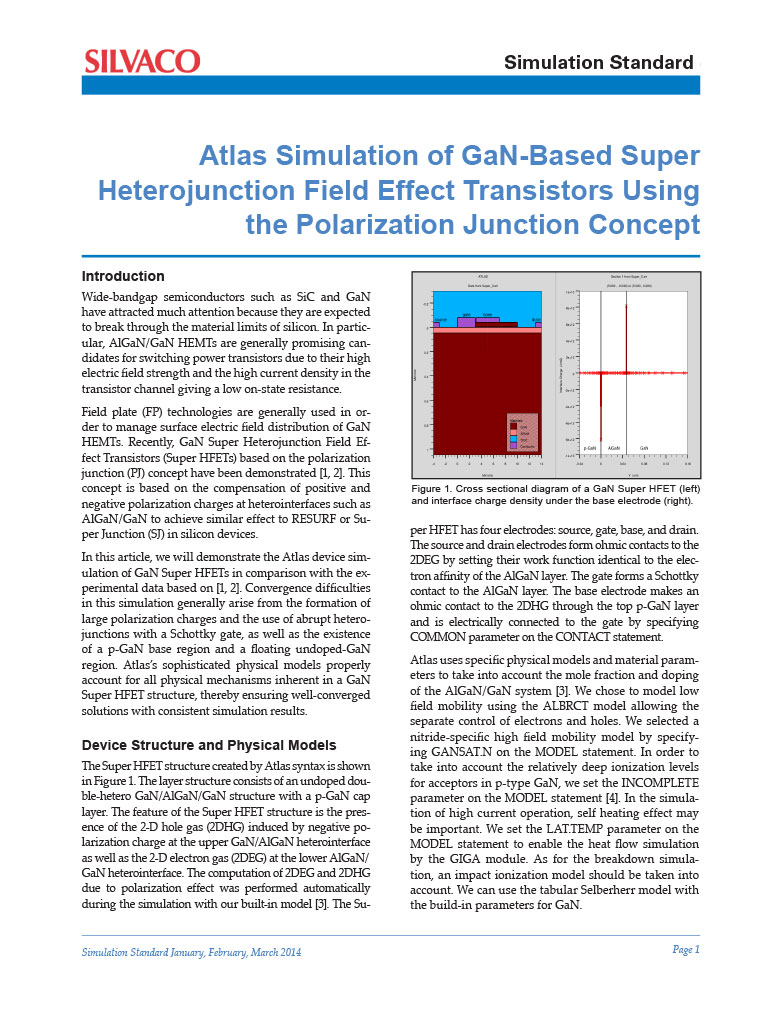Atlas Simulation of GaN-Based Super Heterojunction Field Effect Transistors Using the Polarization Junction Concept
Introduction
Wide-bandgap semiconductors such as SiC and GaN have attracted much attention because they are expected to break through the material limits of silicon. In particular, AlGaN/GaN HEMTs are generally promising candidates for switching power transistors due to their high electric field strength and the high current density in the transistor channel giving a low on-state resistance.
Field plate (FP) technologies are generally used in order to manage surface electric field distribution of GaN HEMTs. Recently, GaN Super Heterojunction Field Effect Transistors (Super HFETs) based on the polarization junction (PJ) concept have been demonstrated [1, 2]. This concept is based on the compensation of positive and negative polarization charges at heterointerfaces such as AlGaN/GaN to achieve similar effect to RESURF or Super Junction (SJ) in silicon devices.
In this article, we will demonstrate the Atlas device simulation of GaN Super HFETs in comparison with the experimental data based on [1, 2]. Convergence difficulties in this simulation generally arise from the formation of large polarization charges and the use of abrupt heterojunctions with a Schottky gate, as well as the existence of a p-GaN base region and a floating undoped-GaN region. Atlas’s sophisticated physical models properly account for all physical mechanisms inherent in a GaN Super HFET structure, thereby ensuring well-converged solutions with consistent simulation results.



